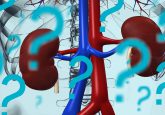One step closer to a breath test for lung cancer

In a collaboration between Israeli, American and British scientists, research was recently presented on a novel breathalyzer test for lung cancer.
The method could offer an alternative to traditional diagnostic measures for this disease – including bronchoscopies, computer-guided biopsies and surgery.
A total of 358 patients from Israel and the USA (with centers in both Colorado and Florida) were enrolled on the study, which analyzed exhaled breath from patients either suffering from COPD (control) or untreated lung cancer.
The samples were analyzed in a central laboratory, using both a gold nanoparticle-based artificial olfactory system (NaNose chip) and GC–MS. The team used a pattern recognition approach to correlate the results from both of these analyses with the clinical data.
The test detects volatile organic compounds produced by lung cancer tumors – with the NaNose chip detecting these in exhaled breath. From the enrolled patients, 213 were diagnosed with lung cancer (with 62 in early and 143 at advanced stages of the disease), and 143 presented without cancer.
The breath analysis method presented by the researchers was able to differentiate between benign and malignant lung lesions, in addition to indicating the stage of the disease, if present.
The team envisages this being used as an initial indicator, which would then lead to more invasive tests if necessary – for instance, an X-ray. The research is funded by the European Union’s LCAOS project – which aims to support research into early diagnosis of lung cancer – in addition to support from the International Association for the Study of Lung Cancer.
Source: Peled N, Abud-Hawa M, Liran O et al. Breath analysis as a noninvasive biomarker for early detection of lung cancer. J. Clin. Oncol. 32, 5s (Suppl.; abstract 7560) (2014).





